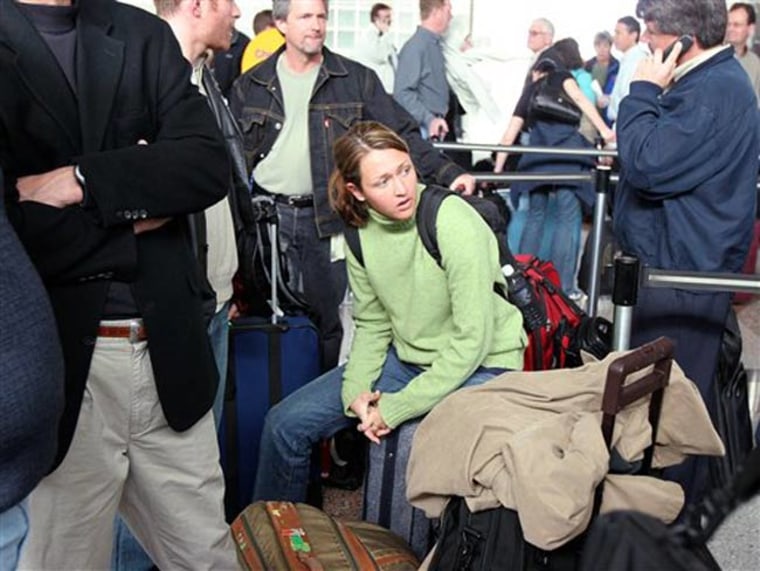We’ve all heard stories about air rage: Someone’s flight is delayed by rotten weather elsewhere and he throws a tantrum, loudly berating the airline. Or a weary traveler is vocally miffed because a baggage screener disses him. Or an overworked airline employee, angry at airline management, takes out her frustration on the passengers, without whom there would be no airline.
As the problems pile up, especially with money-losing, capacity-cutting U.S. carriers, incidents of air rage pile up, too. As travelers, we can’t control airlines or airports. But there are some things we can do to stop air rage before it happens.
We begin with the P-word: planning. A little planning can take us a long way to achieving peace of mind, whether it’s thinking about how much time to allow before leaving for the airport in heavy traffic, researching the latest twists and turns in security rules or — as U.S. airlines begin to charge fees for checking bags — knowing how to pack.
The smartest approach is doing as much as you can before you leave for the airport, thus streamlining your travel experience and minimizing the amount of time you spend in crowded terminals.
So, book your flight online, either through the many commercial Web sites out there or through the airline’s Web site. Print your boarding pass on your home computer. Go to a Web site like the invaluable seatguru.com, scope-out the layout of your plane and chose your seat — the one away from the galley, the restrooms and the middle of the row.
Research the latest security requirements before you encounter that long screening line. The Transportation Security Administration Web site is useful for this; click on “What to Know Before You Go.” If you fly a lot and the budget permits, sign up for one of the commercial registered traveler programs, such as Clear; you’ll still have to go through security and doff your shoes, but you’ll have a separate, shorter line.
Research the airport. Many airport Web sites include maps of terminals and parking facilities and include directories of amenities such as children’s play areas, cool aviation museums, restaurants and bars, washrooms with diaper-changing stations and dental and medical clinics. Most major foreign airports have English-language versions.
Pack smart. Packing smart means packing lightly. Put everything you think you need in your primary bag; then unpack and leave half of it at home; you don’t need everything you think you do.
Don’t be one of those problem passengers who try to beat the checked-bag fees by carrying-on hugely oversized bags that won’t fit into the overhead compartment. Flight attendants and your fellow travelers will thank you for it. In any case, if you are determined to try to carry on a very large bag, you'll find that U.S. airlines have begun rigidly enforcing the maximum carry-on bag size. They've already started making people fit their bags in to bag-sizers located next to departure gates. If your bag doesn’t fit, you're gong to have to check it — in most cases, for a fee.
I have traveled light for years, seldom checking anything, and there is nothing like the feel-good factor you get when you waltz out of the airport while other passengers are standing around waiting for the baggage carousel to finally cough up their gear.
These are common-sense guidelines, of course. Do they provide an elegant, comprehensive solution to our air travel woes? No, but it’s a start.
